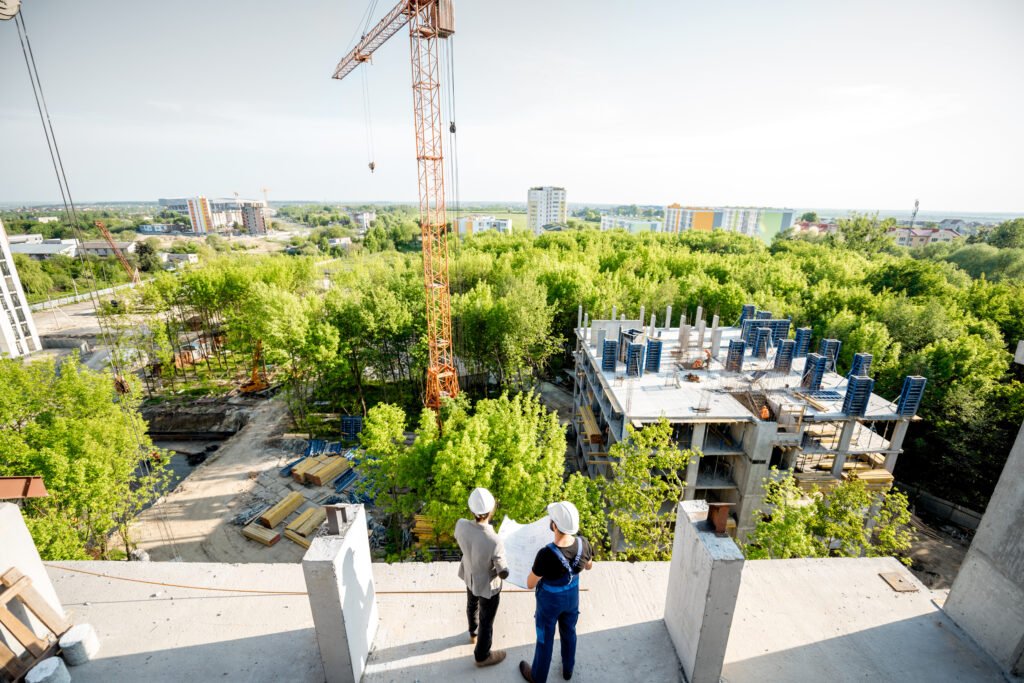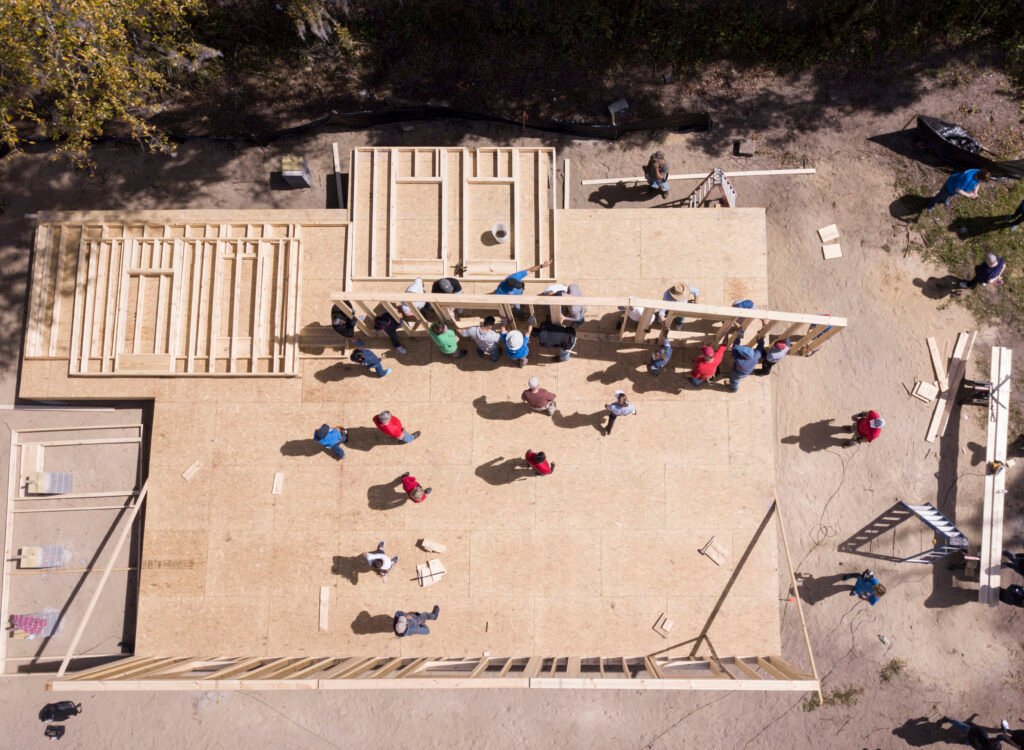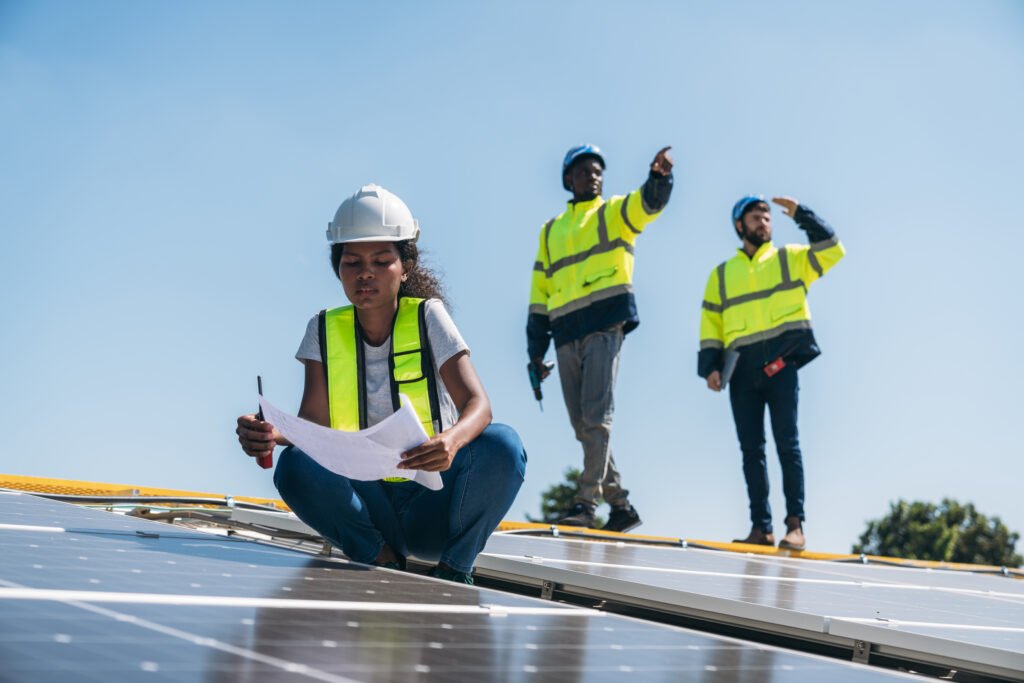Innovative Engineering Solutions for Sustainable Construction
As the world shifts towards more eco-conscious practices, the construction industry is following suit by embracing sustainable construction solutions. Engineers and construction professionals are increasingly focused on creating buildings and infrastructure that reduce environmental impact while maintaining efficiency, durability, and cost-effectiveness.
At Kuppus Engineers, we are at the forefront of adopting innovative engineering solutions that align with sustainable practices, ensuring a balance between human development and environmental responsibility.

In this blog, we’ll explore key engineering innovations driving sustainable construction and how Kuppus Engineers delivers eco-friendly building techniques to meet the growing demands for green construction technologies.
The Rise of Sustainable Construction Solutions
Sustainability in construction isn’t just about using fewer resources; it’s about optimizing the entire building process from material selection to energy efficiency. The global focus on reducing carbon emissions and conserving resources has driven engineers to develop cutting-edge techniques that not only save the planet but also enhance the performance and longevity of the buildings we construct.
Key Goals of Sustainable Construction:
- Reduce Carbon Footprint: Using low-carbon construction techniques and renewable energy sources to minimize the environmental impact.
- Optimize Resource Use: Employing eco-friendly building materials and minimizing waste during the construction process.
- Enhance Energy Efficiency: Designing buildings with energy-efficient systems to reduce the long-term consumption of non-renewable resources.
Innovative Engineering Solutions for Green Construction
1. Use of Renewable and Recyclable Materials
One of the most effective sustainable construction solutions is the use of renewable materials. Traditional materials such as concrete and steel have a high carbon footprint, but the industry is now shifting toward alternatives like bamboo, recycled metals, and eco-friendly concrete.
At Kuppus Engineers, we prioritize selecting materials that are both durable and sustainable. Using renewable materials in construction not only reduces environmental harm but also ensures compliance with green building standards like LEED (Leadership in Energy and Environmental Design).
“By integrating renewable materials in construction, we reduce our carbon footprint while delivering strong and sustainable infrastructure.” — Head Engineer, Kuppus Engineers

2. Energy-Efficient Construction Techniques
Energy-efficient construction methods are essential to reduce the environmental impact of buildings over their entire lifecycle. This includes incorporating energy-efficient systems such as solar panels, LED lighting, and smart HVAC (heating, ventilation, and air conditioning) systems.
Kuppus Engineers specializes in designing energy-efficient systems for both residential and commercial projects. For example, buildings with energy-efficient insulation and windows can reduce heating and cooling demands, cutting down on the building’s overall energy consumption.
3. Modular Construction for Minimal Waste
Modular construction is a method where building components are pre-fabricated off-site and assembled on-site. This innovative engineering solution minimizes material waste, reduces construction time, and enhances quality control.
The benefits of modular construction are significant, particularly in sustainable construction solutions, as it allows precise material usage and reduces on-site waste. At Kuppus Engineers, we use modular techniques to speed up projects while minimizing our environmental footprint.

Embracing Green Construction Technologies
Technological advancements are playing a significant role in driving sustainable engineering practices. From digital tools to eco-friendly building solutions, modern technology is providing engineers with the capability to plan, design, and execute construction projects more efficiently.
4. Building Information Modeling (BIM)
Building Information Modeling (BIM) is a game-changer in sustainable construction. BIM allows engineers and architects to create a detailed digital model of a building that tracks the materials used, energy consumption, and potential environmental impact.
Kuppus Engineers utilizes BIM in all major projects to ensure sustainable infrastructure development. This tool provides a comprehensive overview of the project, helping reduce errors and rework, which further reduces waste and unnecessary material usage.
5. Smart Building Systems
Smart technologies allow buildings to function autonomously, adjusting lighting, temperature, and energy usage based on real-time conditions. By integrating smart systems, buildings become more energy-efficient and adaptive to the environment.
The Role of Kuppus Engineers in Promoting Sustainable Infrastructure Development
At Kuppus Engineers, sustainability is more than a trend—it’s a core principle that informs every project we undertake. Whether it’s optimizing resources, reducing waste, or designing energy-efficient systems, our goal is to deliver eco-friendly construction solutions that align with the highest standards of sustainability.

Benefits of Choosing Kuppus Engineers for Sustainable Construction:
- Expertise in Low-Carbon Construction Techniques: We use advanced construction methods to ensure reduced carbon emissions.
- Green Certification Compliance: Our projects comply with international green standards like LEED and BREEAM.
- Sustainable Material Sourcing: We carefully source materials that minimize environmental harm while ensuring durability and quality.
- Innovation-Driven: We continuously innovate by embracing the latest technologies in sustainable construction, such as BIM and smart building systems.
Future Trends in Sustainable Construction
Looking ahead, sustainable construction is set to evolve further with advancements in green technologies. The focus will be on scaling up eco-friendly construction methods to meet global demand while further reducing the environmental impact of infrastructure projects.
Emerging Trends to Watch:
- Zero-Carbon Buildings: The push toward buildings that operate entirely on renewable energy and produce zero emissions.
- Circular Economy in Construction: Reusing materials from old buildings for new projects, reducing the need for new resources.
- Biophilic Design: Incorporating nature into building design, creating structures that enhance occupant well-being while being sustainable.
Conclusion
As the world continues to emphasize the importance of environmental responsibility, sustainable construction solutions are becoming critical to the future of the building industry.
With innovative engineering solutions like renewable materials, energy-efficient systems, and modular construction, Kuppus Engineers is leading the way in creating infrastructure that not only meets the demands of today but also protects our planet for future generations.
Sustainable construction is not just a goal—it’s a responsibility, and by choosing Kuppus Engineers, you can ensure that your projects contribute positively to both society and the environment.




